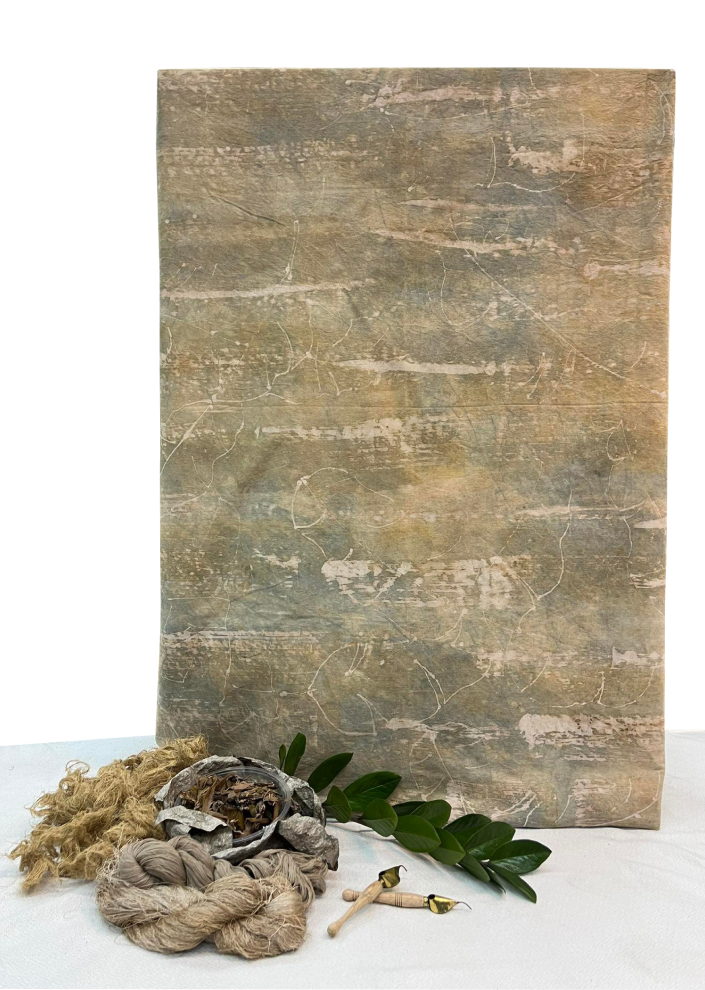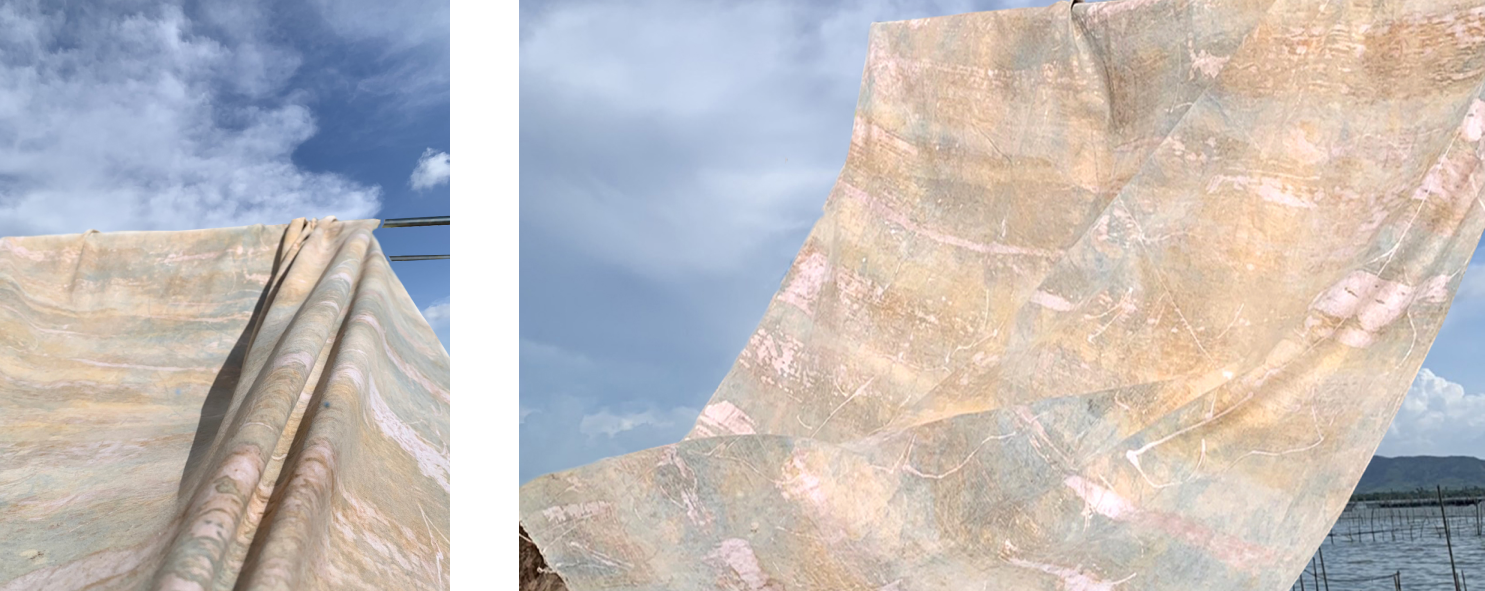“>”>The Colors of Nature
“>”>Ms. Natchana Nuanyang
Introduction
The creative work “The Colors of Nature” was inspired by the beauty of patterns and colors of bananas, an amazing and multi-purpose plant that has lived with Thai people’s way of life and culture for a long time. Bananas are available and emerge naturally as an eternal truth, perfectly created by nature in all dimensions. This research created the design of a new unique pattern by batik creation technique with natural dyes, i.e., the colors from banana sap, indigos, and sapodilla leaves based on the concept and theory of sustainability. Precious local intellectual heritage was extended, and can be manufactured as textile fabrics for commercial use in real.
Bananas are an identity plant implying way of life, and have lived with Thai people from the past up until currently. They are a traditional and cultural plant cultivated by agriculturists as their occupation. They create income to communities and the county. They are also an amazing plant, of which all parts can be utilized from stems, leaves, flowers, shoots, sap, fruits, to roots as food, clothing, and drugs. Thus, bananas have been widely utilized up until currently. They are even included in the four requisites of humans (Creative Innovation from Banana Plants to Fashion Lifestyle Products Using Sustainability Theory, 2022). Moreover, bananas also contained prominent and unique physical features, i.e., stems, leaves, blossoms, color, and internal as well as external patterns that change with their age and growth. With such beauty created by nature, it was brought as the inspiration to create the work “The Colors of Nature” by taking patterns of banana leaf sheaths, leaves, and other parts with different and uneven lines as the naturally beautiful imperfection.
In this research, the work was created by batik drawing and natural dyes, i.e., the colors from banana sap, indigos, and sapodilla leaves. These 3 types of plants would generate the different colors and dyed water concentrations of the dyed water, resulting in a fabric pattern with values of color at different levels. Besides, this research used an eco-friendly fabric type to create the work through the mixing of banana fiber fabric and cotton fiber that finally turned into
the woven fabric from the natural fibers. Textile industry currently gives precedence to sustainable product development, particularly the use of related concepts and theories; along with worthy utilization of natural resources, lower use natural resources, and promoting the concept of “design for sustainability” (Creative Innovation from Banana Plants to Fashion Lifestyle Products Using Sustainability Theory, 2022).
Conclusion
According to the work creation with the colors from nature by batik creation technique, the different color shade was obtained each time due to several intervening factors, e.g., weather, humidity, sunlight, and the duration of boiling for dyeing, banana peel freshness, indigo pot making technique, and the fabric type. These definitely affected color intensity and fastness to color stain. Soaking the drawn fabric several times, drying it in the shade, and then dyeing it again with indigos generated the darker colors. The technique and process from the trial can be adapted to dyeing other types of plants.
Objectives Aims or Purposes
This creation did not only bring aesthetic beauty, but the technique, process, and knowledge obtained can also be transferred to communities and anyone interested for further fabric product creation related to human way of life, with adaptation to meet market needs. It creates income and employment, parallel to local wisdom inheritance and awareness of environmental impacts.
Process or Methods
- Related literatures were review, with field survey and data collection/analysis to obtain creation approaches.
- Batik creation with natural dyes was studied.
- Trial of batik creation technique with natural dyes from banana sap, indigos, and sapodilla leaves.
- The work was created.
- The word was presented and spread. Knowledge was transferred to communities and anyone interested.
- Conclusions.
Techniques and materials
Materials
- 100x 120cm woven fabric of mixed banana fiber and cotton fibers
- Equipment for batik creation and natural dyeing
- Wasted banana peels from making banana flour and banana chips, indigos, and wasted sapodilla leaves from pruning of agriculturists.
- Mordants, e.g., red lime, alum, and rust.
Technique and Process
- The fabric was boiled to remove dirt and powder. Then, it was dried completely.
- Banana peels and sapodilla leaves were boiled to extract the colored water for dyeing.
- The clean fabric was soaked in the colored water, i.e., banana sap water and sapodilla leaf water, respectively. Then, the fabric was damped-dried. Next, it was soaked in the colored water again, and dried completely.
- The dry fabric was drawn with candles as per the design for the desirable pattern.
- The drawn fabric was soaked in the colored water again twice. Then, it was damped-dried in the shade. Next, it was dyed again with indigos.
- The fabric was soaked in the mordants, i.e., red lime, alum, and rust, respectively.
- The fabric was boiled in the extremely boiled water to remove candles. Then, it was washed with clean water and dried in the shade.
Size or Mins.
1200Px * 1200Px

